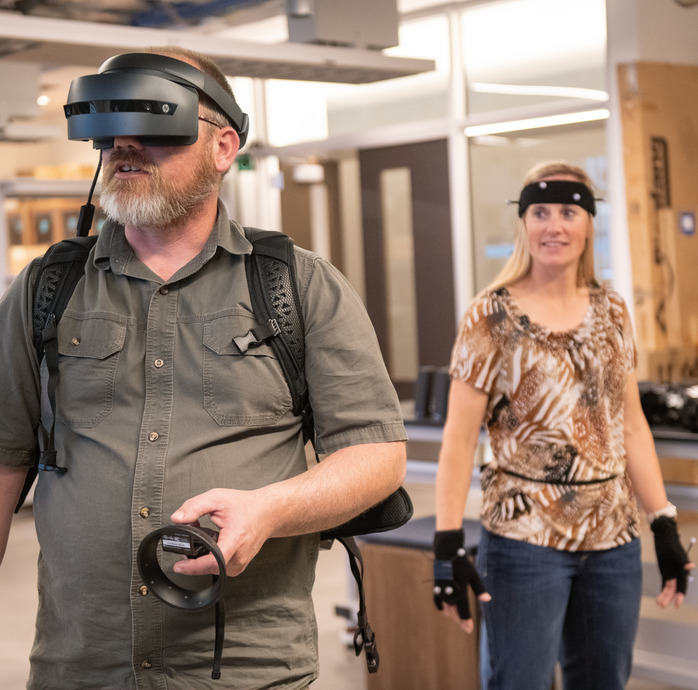Simulations and Virtual Worlds
There are many ways to facilitate your students’ immersion in simulations. There are two types of simulations: augmented reality (AR) and virtual reality (VR). In a VR simulation, the learner is experiencing an entirely alternate reality. This can be achieved using VR goggles. Augmented reality adds something simulated on top of the real-life environment. AR and VR technologies can be as simple as cardboard goggles, such as Google Expeditions.
In Virtual Worlds, the learner creates an avatar and can learn and live within another world, experiencing spaces and places such as museums, concerts, universities, and all those things that we experience in real life. There are many educational uses of virtual worlds. Learners can experience life in an avatar whose characteristics are markedly different than their real-life characteristics. This can build empathy and a deeper understanding of privilege and marginalization. There is an island, in the virtual world called Second Life, where learners can experience what it feels like to have schizophrenia. There are also islands on which many different languages are spoken; learners can practice speaking a foreign language in a virtual ‘study abroad’. They can also ‘time travel’ by visiting islands where the time period is, for example, the Renaissance! In the below 1-minute video, Rachel showcases an island in Second Life called Genome Island.
There is a scholarly group called Virtual Worlds Best Practices in Education (VWBPE) that holds regular conferences showcasing educational uses of and educational research on virtual worlds. Not only are virtual worlds the site of educational research, but also other types of research such as the ethnography written by anthropologist Tom Boellstorff (2015) called Coming of Age in Second Life.
Resources: Virtual labs, Simulations or Interactive Learning Objects
University of Wyoming
- Shell 3D Visualizualization Center: https://www.uwyo.edu/ser/visualization-center/index.html
General
- Merlot virtual labs (Biology, Chemistry, Physics, Environmental Science, Engineering, Math) https://virtuallabs.merlot.org/
- From Merlot link, an article on design principles for online labs
- Desmarais R. and Limson M. 2007. Designing and Implementing Virtual Courseware to
- Promote Inquiry-based Learning. Journal of Online Learning and Teaching. https://jolt.merlot.org/vol3no1/desharnais.htm
- PHET simulations (Physics, Chemistry, Earth Science, Math, Biology):https://phet.colorado.edu/_m/
Environmental Science
- UCAR provides a a directory of educational games, simulations, and virtual labs related to Weather, Climate, Atmospheric Science, and the Sun and Space Weather:https://scied.ucar.edu/games-sims-weather-climate-atmosphere
- Edumedia’s environmental science and ecology:https://www.edumedia-sciences.com/en/node/51-ecosystems
Geology
- Geology online labs:https://www.sciencecourseware.org/GLOL/
- http://onlinelabs.in/geology
- Teaching Geoscience Online:https://serc.carleton.edu/NAGTWorkshops/online/lab_activities.html
- Characteristic of the ocean floor:http://www.glencoe.com/sites/common_assets/science/virtual_labs/ES18/ES18.html
- Ocean current:https://spaceplace.nasa.gov/ocean-currents/en/
- Plate tectonics:https://phet.colorado.edu/en/simulation/legacy/plate-tectonic
- A "Virtual" Tour of On-Line Resources for Earth Science Education (land topography, ocean bathymetry, ocean tides, ocean temperature, weather & climate etc. :https://archive.bigelow.org/virtual/index.html
AR/VR Doc: https://docs.google.com/document/d/1ZmWsvoOPhNg3xCqeJKakLqv4RTfJwFc1nGOOx56y9lA/edit?usp=sharing


